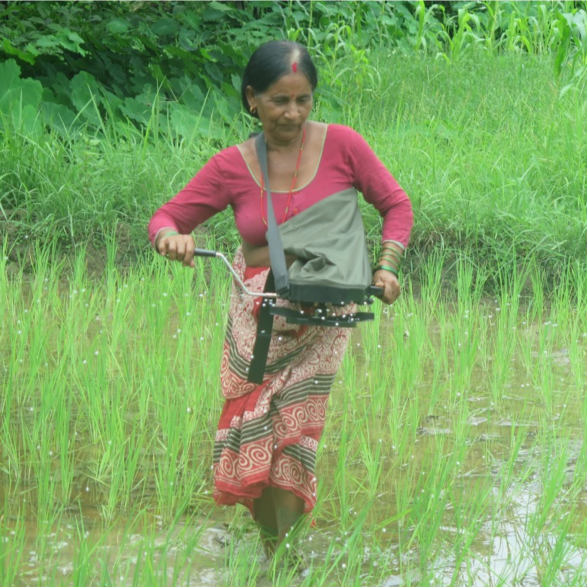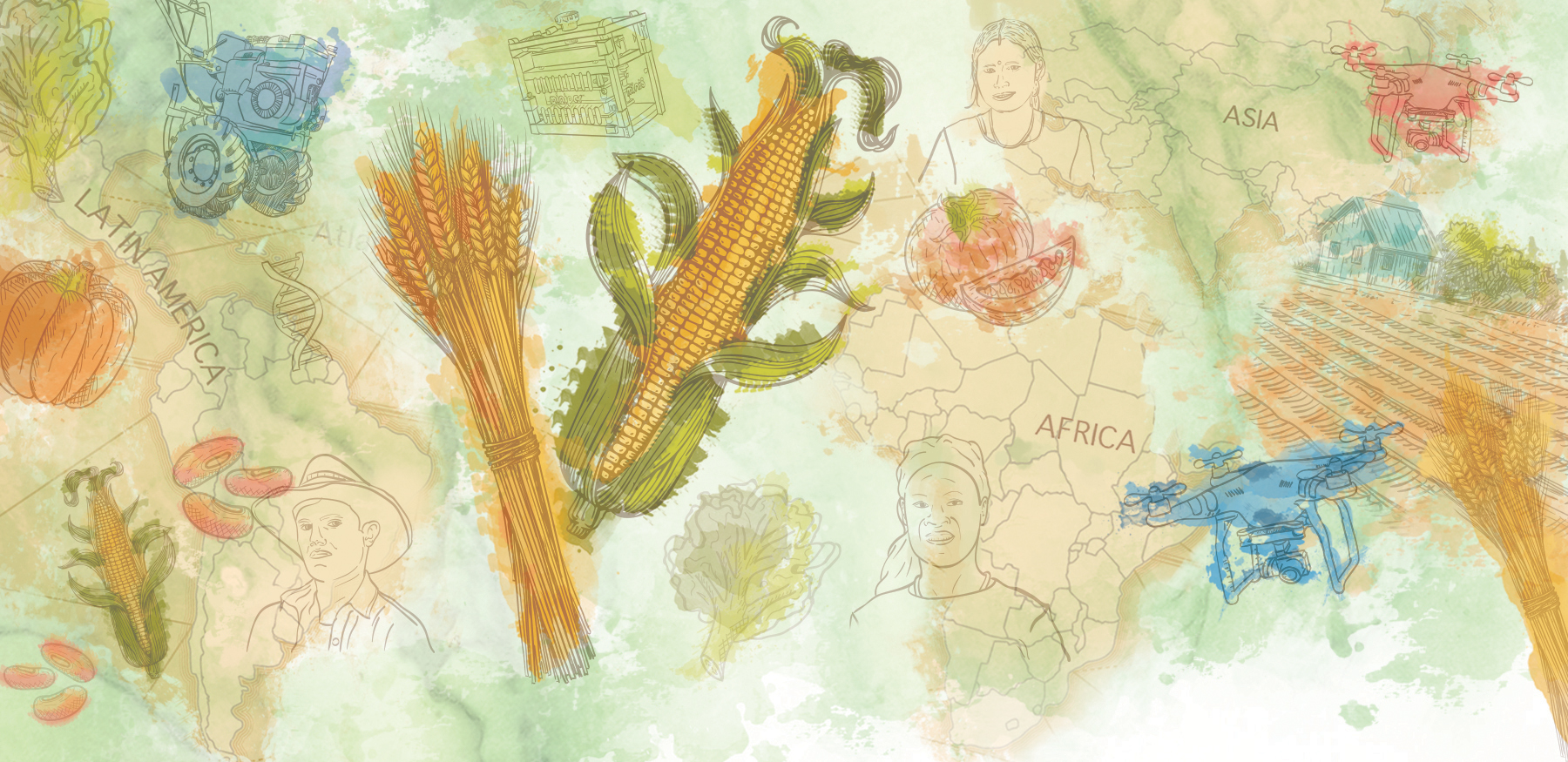Access to affordable quality seed is one of the prerequisites to increase agricultural production and improve the livelihoods of Nepali farmers. However, there are significant challenges to boost Nepal’s seed industry and help sustainably feed a growing population.
Six years ago, Nepal launched its National Seed Vision 2013-2025. This strategic plan aims at fostering vibrant, resilient, market-oriented and inclusive seed systems in public-private partnership modalities, to boost crop productivity and enhance food security.
The Nepal Seed and Fertilizer (NSAF) project, led by the International Maize and Wheat Improvement Center (CIMMYT), is supporting the government to enhance national policies and guidelines, and private seed companies to build competitive seed businesses and hybrid seed production.

Quality seed can increase crop yield by 15-20%. However, there are critical challenges hindering the growth of Nepal’s seed industry. Existing seed replacement rate for major cereals is low, around 15%. About 85% of Nepali farmers are unable to access recently developed improved seeds — instead, they are cultivating decades-old varieties with low yield and low profits. Some of the factors limiting the development of seed systems are the high cost of seed production and processing, the limited reach of mechanization, and the low use of conservation agriculture practices.
The demand for hybrid seeds in Nepal is soaring but research in variety development is limited. Most of the country’s supply comes from imports.
In collaboration with the Nepal Agricultural Research Council (NARC), the NSAF project team is working with seed companies and cooperatives to scale hybrid seed production of maize, tomato and rice. Through this project, CIMMYT collaborated with the Seed Quality Control Center (SQCC) and national commodity programs of the NARC to draft the first hybrid seed production and certification guidelines for Nepal to help private seed companies produce and maintain standards of hybrid seeds.
Extension and promotion activities are essential to bring improved seed varieties to farmers. Standard labelling and packaging also needs to be strengthened.

A joint effort
CIMMYT and its partners organized a two-day workshop to review the progress of the National Seed Vision. The event attracted 111 participants from government institutions, private companies and development organizations engaged in crop variety development, seed research, seed production and dissemination activities.
In the opening remarks, Yubak Dhoj G.C., Secretary of Nepal’s Ministry of Agriculture and Livestock Development, addressed the seed sector scenario and its challenges. He stressed the importance of collaboration among seed stakeholders to meet the targets of the National Seed Vision in the next six years.
During the technical sessions, Madan Thapa, Chief of the SQCC, analyzed the current status of the National Seed Vision and highlighted the challenges as well as the opportunities to realize it.
Laxmi Kant Dhakal, Chairperson of the Seed Entrepreneurs Association of Nepal (SEAN) emphasized the importance of private sector engagement and other support areas to strengthen seed production and marketing of open-pollinated varieties and hybrids.

Tara Bahadur Ghimire, Principal Scientist at NARC, gave an overview of the status of NARC varieties, source seed and resource allocation.
Dila Ram Bhandari, former Chief of SQCC, led a discussion around the assumptions and expectations that arose while developing the National Seed Vision.
Technical leads of maize, rice, wheat and vegetables presented a road map on hybrid variety development and seed production in line with the National Seed Vision’s targets for each crop.
“A large quantity of hybrid seeds, worth millions of dollars, is being imported into Nepal each year,” explained AbduRahman Beshir, Seed Systems Lead of CIMMYT’s NSAF project. “However, if stakeholders work together and strengthen the local seed system, there is a huge potential in Nepal not only to become self-sufficient but also to export good quality hybrid seeds in the foreseeable future. Under the NSAF project we are witnessing a few seed companies that have initiated hybrid seed production of maize and tomato.”
In one of the exercises, workshop participants were divided in groups and examined different topics related to the realization of the National Seed Vision. They looked at genetic resources, hybrid and open-pollinated variety development, source seed production and supply, private sector engagement and marketing, seed extension and varietal adoption by farmers, seed quality control services, and roles of research partners and other stakeholders. The groups presented some of the major challenges and opportunities related to these topics, as well as recommendations, which will be documented and shared.
The outcomes of this mid-term review workshop will inform policy and guide the discussions at the upcoming International Seed Conference to be held in early September 2019.

Regulating hybrid seed production
At the workshop, participants thoroughly discussed the draft hybrid seed production and certification guidelines, developed under the NSAF project.
The guidelines are the first of their kind in Nepal and essential to achieve the targets of the National Seed Vision, by engaging the private sector in hybrid seed production.
Hari Kumar Shrestha, CIMMYT’s Seed Systems Officer, and other seed experts from the SQCC presented the main features and regulatory implications of the guidelines.
After the workshop, the guidelines were sent to the National Seed Board for approval.

 Innovations
Innovations 
